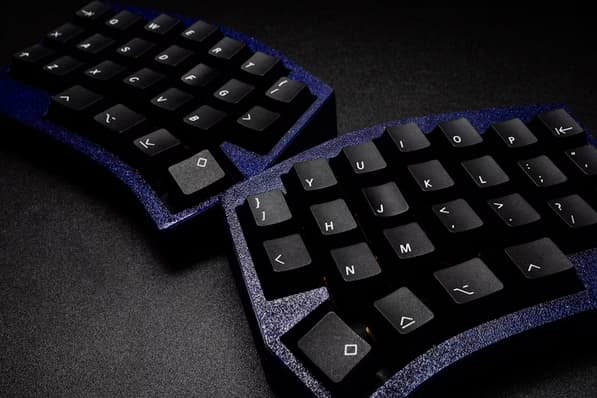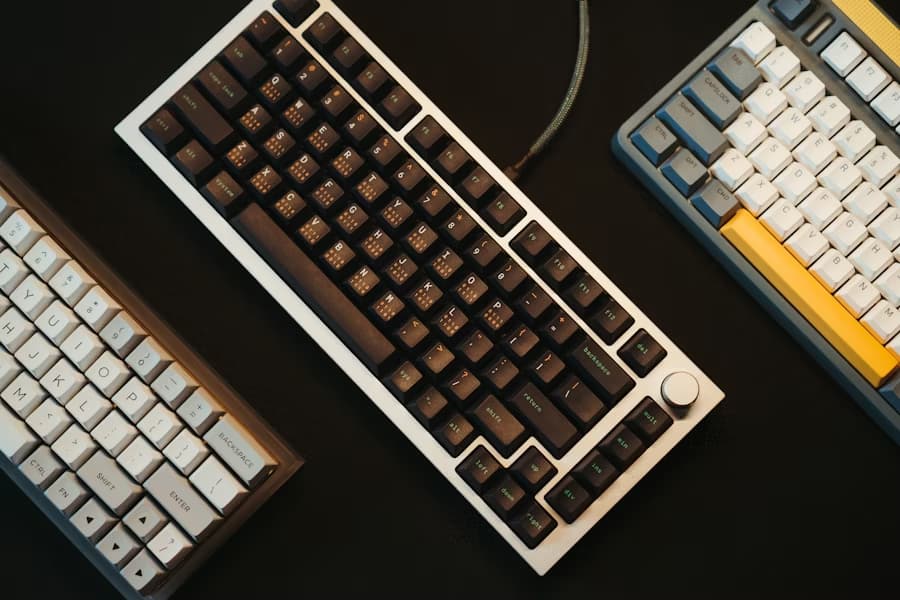When it comes to choosing a keyboard, many people immediately focus on the look or type of keys, but there are actually many more factors that affect comfort and productivity. Size, layout, and key type all play an important role in how comfortable you will be working or playing with your chosen keyboard. Just as we carefully select tools for work, gambling enthusiasts choose reliable gaming platforms such as: https://casinos-fuera-de-espana.net/, for an exciting and comfortable experience. In this guide, we will understand in detail what sizes and layouts of keyboards exist, what to consider when choosing one and how to make every keystroke as comfortable and efficient as possible.
Understanding Keyboard Sizes: Finding Your Fit
The size of a keyboard is a critical factor that influences comfort, functionality, and portability. Different sizes cater to specific needs, from sprawling office desks to compact travel setups. Below, we break down the main keyboard size categories and their pros and cons.
Full-Size Keyboards: The All-Inclusive Option
Full-size keyboards are the traditional choice, equipped with a complete set of keys, including a numeric keypad, function keys (F1–F12), and navigation keys (e.g., Home, End, Page Up/Down). They’re ideal for users who need access to every key for tasks like data entry or programming.
Advantages:
- Comprehensive functionality. Perfect for spreadsheet work, accounting, or multitasking across multiple applications.
- Ease of use. All keys are readily available, reducing the need for shortcuts or software toggles.
- Office-friendly. Suited for environments where diverse software demands quick access to specialized keys.
Disadvantages:
- Space-hungry. Their large footprint can overwhelm smaller desks or cluttered workspaces.
- Not travel-friendly. Bulky and heavy, full-size keyboards are impractical for frequent travelers.
Tenkeyless (TKL) Keyboards: Striking a Balance
Tenkeyless keyboards eliminate the numeric keypad while retaining most other keys, offering a compact yet functional design. They’re popular among gamers and professionals who want a streamlined setup without sacrificing core features.
Advantages:
- Space-efficient. Ideal for smaller desks or setups where desk real estate is at a premium.
- Gamer-friendly. The compact design allows for better mouse movement, crucial for fast-paced games like shooters or RTS titles.
- Improved ergonomics. Positions the mouse closer to the keyboard, potentially reducing shoulder strain.
Disadvantages:
- No numeric keypad. Users who frequently input numbers may find this limiting.
- Reduced shortcut keys. Fewer keys can slow down navigation in complex workflows.
Compact Keyboards (75% and 60%): Minimalism Meets Functionality
Compact keyboards, such as 75% and 60% layouts, prioritize portability and a clean aesthetic by trimming non-essential keys. These are favored by those who work in tight spaces or value a sleek, portable setup.
Advantages:
- Ultra-portable. Lightweight and easy to carry, perfect for travel or mobile workstations.
- Clutter-free. Takes up minimal desk space, creating a tidy workspace.
- Aesthetic appeal. Popular among enthusiasts for their sleek, minimalist look.
Disadvantages:
- Limited keyset. Missing function keys or navigation keys can complicate certain tasks.
- Number input challenges. Users may need to rely on secondary layers or virtual keyboards for numerical data.
Minimalist Keyboards (40%): The Ultimate in Simplicity
At the extreme end of the spectrum, 40% keyboards strip away everything but the essentials—letters, numbers, and a few modifiers. These are niche tools for users who prioritize portability and minimalism above all else.
Advantages:
- Highly portable. Fits easily into a backpack or even a large pocket.
- Distraction-free. Fewer keys keep the focus on core typing tasks.
- Ultra-compact. Maximizes desk space for other devices or tools.
Disadvantages:
- Barebones functionality. Unsuitable for tasks requiring frequent use of function or navigation keys.
- Steep learning curve. Requires heavy reliance on key combinations for full functionality.
Keyboard Layouts: Choosing What Works for You
Beyond size, the key layout is a defining factor in how intuitive and efficient a keyboard feels. Layouts vary by region, language, and typing philosophy, so selecting the right one is key to a seamless experience.
QWERTY: The Universal Standard
The QWERTY layout is the default for most English-speaking regions, including the US, UK, and Canada. Its widespread adoption makes it the go-to choice for most users.
Advantages:
- Universal compatibility. Supported by virtually all devices and software.
- Familiar design. Most users are already comfortable with QWERTY, minimizing the learning curve.
Disadvantages:
- Language limitations. Less efficient for non-English languages, such as those using Cyrillic or accented characters.
AZERTY and Regional Variants: Tailored for Specific Languages
For French speakers or those in regions like Belgium, the AZERTY layout is optimized for typing accented characters and French-specific punctuation.
Advantages:
- Language-specific efficiency. Streamlines typing in French or other supported languages.
- Regional familiarity. Comfortable for users accustomed to local standards.
Disadvantages:
- Limited versatility. Less intuitive for English or other non-supported languages.

Alternative Layouts: Dvorak and Colemak
For those seeking ergonomic benefits, Dvorak and Colemak layouts rearrange keys to reduce finger movement and boost typing speed. These are less common but appeal to enthusiasts and professionals aiming for efficiency.
Advantages:
- Ergonomic design. Minimizes finger travel, reducing strain and boosting speed.
- Fewer errors. Optimized key placement can lead to more accurate typing.
Disadvantages:
- Learning curve. Adapting to a new layout takes time and practice.
- Limited support. Some software or devices may not fully support these layouts.
Mechanical vs. Membrane Keyboards: Choosing the Right Switch
The type of key switch—mechanical or membrane—determines the feel, sound, and durability of a keyboard. Each has distinct characteristics that cater to different preferences.
Mechanical Keyboards: Precision and Durability
Mechanical keyboards use individual switches under each key, offering tactile feedback and long-lasting performance. They’re a favorite among gamers, programmers, and typists who value responsiveness.
Advantages:
- Longevity. Switches are rated for millions of keystrokes, outlasting other designs.
- Tactile precision. Clear feedback enhances typing accuracy and speed.
- Customizable. Many models allow switch swapping or keycap customization.
Disadvantages:
- Louder operation. Clicky or tactile switches can be disruptive in quiet environments.
- Higher cost. Premium materials and construction drive up the price.
Membrane Keyboards: Quiet and Budget-Friendly
Membrane keyboards use a rubber dome layer to register key presses, resulting in a softer, quieter typing experience. They’re common in office settings and budget-conscious setups.
Advantages:
- Quiet performance. Ideal for shared workspaces or noise-sensitive environments.
- Affordable. Generally cheaper than mechanical keyboards.
- Lightweight. Easier to transport than bulkier mechanical models.
Disadvantages:
- Shorter lifespan. Membrane layers wear out faster with heavy use.
- Mushy feedback. Less distinct keypress feel can slow down typing for some users.
Making the Right Choice
Selecting the ideal keyboard boils down to your specific needs—whether it’s maximizing desk space, optimizing for a particular language, or prioritizing tactile feedback. Full-size keyboards suit data-heavy tasks, while compact models excel in portability. QWERTY is a safe bet for most, but regional or ergonomic layouts like AZERTY or Dvorak may better serve specific users. Mechanical keyboards offer durability and precision, while membrane models prioritize affordability and quiet operation. By weighing these factors, you can find a keyboard that feels like an extension of your workflow, making every keystroke both comfortable and efficient.



